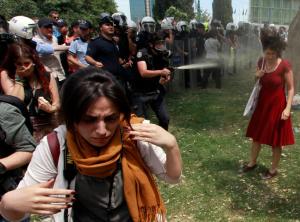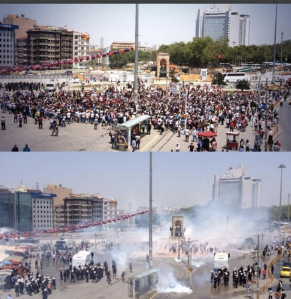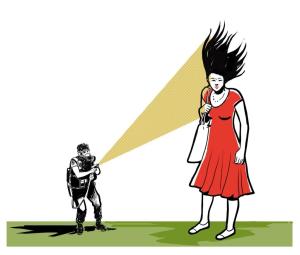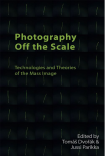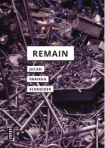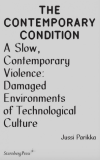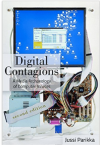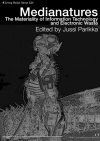Archive
The Amazon Machine
Joana Moll’s new project The Hidden Life of an Amazon User launches online, investigating the relations of code, users, logistics, space and transport. It also deals with the double energies of energy infrastructures of online platforms/logistics companies such as Amazon, and the energies of usage of customers. I was also invited to write for the project; in my short text I outline how “Moll’s critical interface project can also be considered an experimental set up of the Standard Amazon User (SAU): a semi-automated algorithmic pattern of interface actions that are measured and guided by a mass of code and synchronised in relation to the planetary scale logistical operation that is the backbone of Amazon’s infrastructural and data-intensive operations – the warehouse driven architecture of digital economy. “
The full text here.
The Steganographic Image
It’s the Conspiracy week at the Photographers’ Gallery in London and I was asked to write a short text on what lies inside the image (code). In other words, I wrote a short text on the Steganographic Image, and hiding messages in plain sight, although in this case, encoded “inside” a digital image. The image that tricks, the image that operates behind your back, or more likely, triggers processes front of your eyes, in plain sight, invisible. As I was reminded, this is also an idea that Akira Lippit has in a different context developed through Derrida. To quote Lippit (quoting at first Derrida): ‘”Visibility,” he says “is not visible.” Invisibility is folded into the condition of visibility from the beginning. There is no visibility that is not also invisible, no visibility that is not in some way always spectral.’One would be tempted to argue that this is where this consideration of the visual meets up with the history of cryptography, or ciphering and deciphering. Or as Francis Bacon put it in 1605 in ways part of the longer media archaeology of the steganographic image too: “The virtues of ciphers are three: that they be not laborious to write and read; that they be impossible to decipher; and, in some cases, that they be without suspicion.” It is especially this third virtue that remains of interest when looking at images without such suspicion: the most banal, tedius of pictures; a spectrality that conjurs up hidden passages, triggers and operations.
My short text can be found here online. It’s only scratching the steganographic surface.
A short preview of the text.
Hidden in Plain Sight: The Steganographic Image
Who knows what went into an image, what it includes and what it hides? This is not merely a question of the fine art historical importance of materials, nor even a media historical intrigue of chemistry, but one of steganography – hiding another meaningful pattern, perhaps a message, in data; inside text or an image. This image that is always more than. More than what? Isn’t it obvious from the amount of work gone into art-theoretical considerations of the inexhaustible meanings of the photographic image that it has always been a multiplicity: contexts, fluctuating meanings, readings and the insatiable desire to look at things in order to discover its depths.
As such, a steganographic inscription is neither a depth nor the plain surface but somewhere in between. In contemporary images made of data it refers to how the image can be coded as more than is seen, but also more than the image should do. The steganographic digital image can be executed; it includes instructions for the computer to perform. Photographs as part of a longer history of communication media are one particular way of saying more than meets the eye, but this image also connects to histories of secret communication from the early modern period, to more recent discussions in security culture, as well as fiction such as William Gibson’s novel Pattern Recognition (2003). Were J.G. Ballard’s 1950s billboard mysteries one sort of cryptographic puzzle that hid a message in plain visual sight?
After Arikan: Data Asymmetry
After our succesful exhibition of Burak Arikan’s work, Data Asymmetry, I am posting some of the interviews and material that came out of the exhibition.
Here’s a video interview we did with Arikan setting up the exhibition in the Winchester gallery in November 2016:
And then there’s the interview(s) in Furtherfield: Carleigh Morgan interviewed Burak in the part 1 of the interview about Data Asymmetry and myself in part 2 of the interview. The interview(s) address mapping as a collective experiment, networks as events, (art) methodologies of working with data and a lot of other topics related to internet culture.
The Last Pokestop
One does not need an episode of Black Mirror to imagine this quiet future-now landscape: the smaller and smaller rural towns and villages in Finland, emptied of jobs, paper factories, community halls and services.
First came the replacement of the abandoned paper mills with international corporate data server facilities. Gradually the towns turned only into pokestops for the random visitors passing by.

The 21st century Finnish version of the lyrics “This town, is coming like a ghost town” is the ghostly presence of a pokestop that is too far away. The last pokestop.
Plant on Tulipmania
Sadie Plant is such an iconic figure in the study of digital culture and media theory. Here’s her short text on tulips, viruses, spam and modern economy. She wrote this as the Foreword to our Spam Book and here you can access it as a teaser-trailer to the book itself! It speaks of digital anomalies but through the colourful words of tulips and the tulipmania:
“Tulipmania was certainly a great irregularity, a malfunctioning of seventeenth century financial markets causing the first such large-scale economic crash. It was a kind of fever: the craze was as infectious as the virus itself, a runaway sequence of events triggered by the smallest of anomalies – which was, as it happens, effectively repressed as soon as its nature was known: once it was discovered, after nearly three centuries, that a disease was the agent of tulip variegation, the virus was eliminated by the tulip industry. Modern striped, multicoloured, and frilled tulips are the flowers of healthy bulbs, bred to emulate those of their virally infected predecessors: the effects remain, but the virus has gone. Order has been restored. ”
(As an addition, here’s our Introduction to the same volume, written together with Tony D. Sampson: “On Anomalous Objects of Digital Culture“).
Understanding Media: McLuhan 50 years Later
The new issue of Journal of Visual Culture is a celebration of Marshall McLuhan. The Canadian media theorist’s classic book, Understanding Media: Extensions of Man, was published 50 years ago and editor Raiford Guins asked several writers to remember the book with a very short text. The texts in the issue are reactions, variations, recollections and remediations of McLuhan and his themes.
My own text (pp.91-93) was written in Istanbul: a short variation on McLuhan, urban space, weaponization and media environments.
Jussi Parikka: “McLuhan at Taksim Square”
I was carrying a fresh copy of Understanding Media with me on Istiklal Street, Istanbul, alongside people in gas masks and police in riot gear. It no longer felt relevant to write about past experiences of engaging with the book or to reflect on McLuhan as a forerunner of media archaeology. This time I did not want to write about ‘anti-McLuhan’ minor histories of media technologies: the ones that do not take media as extensions of Man but as extensions of the animal – for instance, insects – as their starting point (Parikka, 2010).
Travelling from the Anatolian side of Istanbul with a ferry to Kabatas, the chapter on ‘Weapons’ seemed to strike a chord. Extensive tear-gassing and police operations had turned some parts of the city into something unrecognizable, like in a state of emergency. The events at Gezi Park and its occupation grew from an environmental protest to widespread demonstrations across Turkey. Besides the environmental context, the demonstrations were against the authoritarian measures of the state: excessive tear-gassing, random arrests, and persecution of journalists, spokesmen and – women. In the light of McLuhan one starts to think about the various cultural techniques and media contexts of the events in Istanbul. The usual suspects – social media such as Twitter – were quickly acknowledged as important platforms of knowledge sharing but also for a circulation of the affects of outrage, disbelief and defiance. Online media services seemed to quickly open up a new forum for political discussion, crystallized in the inventive use of hashtags as forms of software literacy. When the mainstream media were airing documentaries on penguins, tweets from Gezi were distributing a whole different set of images about what was happening to public space in Turkey. Tear gas produced its own eerie atmosphere on the streets of Istanbul, which had quickly transformed into policed spaces accessible only with gas masks: a denial of the breath (Sloterdijk, 2009).
Walking up from Kabatas port towards Taksim, one could observe this sort of expansion of the meaning of media. This is where McLuhan is at his best. Media are not only about cinema, television, and radio. We start to see the world as media in itself: roads and surfaces, windows and squares become ways of mediating our relation to time and space. Walls are painted with ad hoc slogans; sprayed with images and words in order to mark a territory but also to leave a trace for the next passerby. The huge letters ‘GAZDOGAN’ referred to the prime minister Tayyip Erdogan and the tear-gas tactics of the government. Not only Facebook walls, but the city walls became quick and dirty media surfaces: I was struck by a photograph of an older Turkish man, in his 70s, drawing the face of Mustafa Kemal Atatürk on the wall. Then he walked to another street corner and drew another face of Mustafa Kemal. It was Kemal who introduced the Latin-based alphabet to Turkey in the 1920s and 1930s: in addition to a Europeanization of Turkey as a way to detach from the writing systems of Arabic and Persian origins, it was also ‘modernization’ in relation to the media technologies of telegraphy and the printing press to which the discrete nature was better suited. The alphabet escorts both a geopolitical orientation as well as entertains a relation to various technological changes not without an effect on our perceptual dispositions.
Atatürk persists as a symbolic reference point for various nationalist protestors: his political heritage nature is remediated as content of chants and demands of political nature. The visual space is not only about figures of Atatürk but also more carnevalistic: penguins (as a reference to mainstream media censorship) are suddenly as popular a source of remix and memes as cats usually are in internet culture. Political expression takes the form of artistic expression: ‘the artist must ever play and experiment with new means of arranging experience, even though the majority of his audience may prefer to remain fixed in their old perceptual attitudes’, writes McLuhan (2001: 276) in the chapter on the telegraph.
The online and the city are paired up in this production of visual resistance, but let’s not get too focused on content. One is struck by McLuhan’s reminder that ‘the city, itself, is traditionally a military weapon, and is a collective shield or armor plate, an extension of the castle of our very skins’ (p. 374). This idea is informative of the role of security, war and the city, but it also misses the point about the past years of security regimes which turn the city into an autoimmune disorder: the inhabitants become the targets of police forces, in relation to global events such as G8/G20 meetings (Renzi and Elmer, 2012), as well as such events as those in Turkish cities. But this autoimmune disease of the city does not extend the skin, but attacks the respiratory organs of people with tear gas. It burns the skin when the chemicals are infused with the water in water cannons. McLuhan is constantly useful as a reminder that media are everywhere, and are able to lock our senses in particular ways – perhaps not in the way that there would be always one dominating media episteme, such as literacy (cf. McLuhan, 2001: 373), but more temporarily as a form of attention management. Instead, there is a constant contestation as to the forms of media power: mainstream television might be producing visions of coldness, like documentaries about penguins, but that feeds back to remediations that expand the time and space of what we mean by media itself.
References
Renzi A and Elmer G (2012) Infrastructure critical: Sacrifice at Toronto’s G8/G20
Conference. Winnipeg: Arbeiter Ring.
McLuhan M (2001[1964]) Understanding Media. London: Routledge.
Parikka J (2010) Insect Media: An Archaeology of Animals and Technology. Minneapolis: University of Minnesota Press.
Sloterdijk P (2009) Terror from the Air, trans. A Patton and S Corcoran. Los Angeles: Semiotext(e).
Saved As: Today’s Media, Tomorrow’s Archive
Our co-organised event at SALT Galata in Istanbul gathered quite a good crowd of people interested in politics and software practices of archives. Together with Burak Arikan, and support from SALT and Winchester School of Art, we were able to get together great insights from academic, curatorial, and software art practice angles on how to think about cultural memory in the technological age. Our initial plan was to focus more on software art and archival question but in the light of past month or so, we wanted to make sure some sort of a connection to Gezi park, Istanbul and Turkey becomes visible. The talks are being uploaded online as video – below mine for those interested. It focused on questions of circulation, media practices, memory and archives in the techno-political context and asked the question of why might a future archivist suddenly find not only cute cat pictures circulating in the internet spaces of June 2013, but also so many penguins. I wanted to reflect on questions of memory and media practices through various examples of the creative visual culture surrounding the past events in Istanbul and Turkey.
We also gathered some follow-up interest. For instance the Today’s Zaman-newspaper interviewed me about the event: “is today’s media tomorrow’s archive?”
Here is Ebru Yetiskin’s article after the event: “Farklı Kaydet: Yeni Medya, Toplumsal Bellekler ve Başka Gelecekler” (in Turkish).
Save as: Social Memory
 An event in Istanbul – welcome!
An event in Istanbul – welcome!
Save as: Social Memory
Convened by Burak Arıkan and Jussi Parikka, and in collaboration with SALT and support of Winchester School of Art.
June 26-27, 2013 19:00
SALT Galata Atelier IV, Istanbul
Participants: Burak Arıkan, Joasia Krysia, Nicolas Malevé, Ali Miharbi, Jussi Parikka
One of the major concerns during the Gezi resistance was how to keep our memories, our pain and grief, our anger, our gains, and our losses alive. We tried to preserve our experiences and present them in numerous media. However, we haven’t had the time and means to critically approach to the rapidly growing archives or to create technologically enhanced curated content.
This symposium brings together three artists, a curator, and an academic who works in the area of software art, archive, and media archaeology. Cultural practices that use the language of technology and digital born content from different perspectives of preservation and memory will be debated. How can we preserve the software itself along with the content it generates? In what way should we consider software itself as the creative archive, arche, of our digital culture? What new archival practices does technology-based art and culture present? How do software, social media, and network practices introduce a sphere of counter-representation which curate alternative narratives of the present? Panelists will discuss the topics of archiving the present as we live, algorithmic curating in crisis, critical collective intelligence, and language of technology as a thinking tool.
Programme schedule:
Wednesday June 26th
19:00 Introduction
19:15 Jussi Parikka – Media Archaeology: Archives of the Present
20:00 Nicolas Malevé – Sniff and sneak through my archives
20:45 Ali Miharbi – Language of technology as a thinking tool
Thursday June 27th
19:00 Joasia Krysia – Speculations on Algorithmic Curating
19:45 Burak Arıkan – Counter Collective Intelligence
20:30 Round Table
Abstracts and bios of speakers:
Jussi Parikka – Media Archaeology: Archives of the Present
Media Archaeology has emerged the past years as a dynamic theory about media culture. This refers to the impact it has had in giving a vocabulary for the material constitution of contemporary technical media culture. Media archaeology examines media technical conditions of existence of culture, and as such, is in a good position to frame the relevance of software for questions of the archive.
However, media archaeology is also a way to investigate the ontology of the present: it asks what sorts of mechanisms of inclusion and exclusion constitute what we perceive, and what remains unperceived? How is the network conditioning our sense of knowledge and our sense of the everyday? How will the speculative future archivist, looking back at June 2013, see and understand our events and networked condition, conditioned by software as well as its political context.
Jussi Parikka Bio
Dr Jussi Parikka is a media theorist who writes on media archaeology, digital culture and obscure topics from insects to viruses. He is Reader in Media & Design at Winchester School of Art, University of Southampton and author of various books, essays and other writings. His monographs include the award-winning Insect Media: An Archaeology of Insects and Technology, as well as the recent What is Media Archaeology? He blogs at http://jussiparikka.net
Nicolas Malevé – Sniff and sneak through my archives
‘(6/24/1996 9:44pm, Personal)”
Will she (either of them) share the love of pornography? Or at least, art? I shall present myself to both of them as a geniality self-flagellat%n machine. Just one bottle tonight, ok? I shall invite them on to my journey of change, showing the way ahead. Immortality. I will let them to sniff and sneak through my archives. (Erkki Kurenniemi, Newton diary, 1996).
The presentation will take as a point of departure the rich set of documents collected and created by Erkki Kurenniemi, Finnish pioneering electro acoustic musician and inventor of early synthesizers, who obsessively recorded his life. The talk will introduce to the different tools and methods we, Michael Murtaugh and Nicolas Malevé, members of the Belgian collective Constant, used to enter in dialog with the vast amount of unclassified documents that constitute the humus for an archive of Kurenniemi’s work.
These tools are our intermediaries, our extra senses to “read” the images, to “listen” to the sounds, to “watch” the videos. The algorithms we borrow, design or customize become our interlocutors. They report back from what they detect, correlate and connect in the different layers of data. They are different voices, each telling a its own story. Having presented these different voices, we will see what happens when other human agents (lawyers, archive institutions) join the dialogue between these intermediaries and ourselves.
Nicolas Malevé Bio
Since 1998 Nicolas Malevé, multimedia artist, has been an active member of the association Constant. As such, he has taken part in organizing various activities to do with alternatives to copyrights, such as Copy.cult & The Original Si(g)n, held in 2000. He has been developing multimedia projects and web applications for cultural organisations. His research work is currently focused on information structures, metadata and the semantic web and the means to visually represent them.
Ali Miharbi – Language of technology as a thinking tool
In this presentation I will sketch the potential of the language of technology as a tool to open up, enrich or simply illustrate our current discussions on social/political issues. Using examples of my work as points of departure I will touch on a variety of concepts like performativity, humor and the problem of representation.
Ali Miharbi Bio
Ali Miharbi (b. 1976) lives and works in Istanbul. He acquired a dual degree in Electrical & Computer Engineering (BS, 2000) and Art Theory & Practice – Painting (BA, 2000) at Northwestern University. In 2010 he completed his MFA from Virginia Commonwealth University. He opened his first solo exhibition at Interstate Projects, Brooklyn, NY. His recent group exhibitions include “Commons Tense”, Electriciteitsfabriek, The Hague (2012), “Turkish Art New and Superb”, TANAS, Berlin (2012), “Consequences are no coincidence”, Pilot Galeri, Istanbul (2012), “video_dumbo: Quasi Cinema”, Dumbo Arts Center, Brooklyn, New York (2011), “FILE 2011″, FIESP Cultural Center, São Paulo (2010), “When Ideas Become Crime”, Depo, Istanbul (2010). His work can take many forms from photographic, graphic or sculptural pieces to dynamic systems driven by live or stored data where he investigates mechanisms that underlie or are constituted by the flows of daily life.
Joasia Krysia – Speculations on Algorithmic Curating
Between the 1960s and 2005, Erkki Kurenniemi, the Finnish artist, scientist, futurologist and technology pioneer set out to document his everyday life with the intention to create a template for all human life that could be reenacted by algorithms to be written in a future quantum world (with the date 2048 in mind). In a wider sense Kurenniemi acted not only as an archivist of his life but also a kind of curator – working with materials not simply to collect and store but to shape using computational power once it is sufficient for purpose. In 2012 Constant Association for Art and Media began to develop some experiments, making programs to begin to understand Kurenniemi’s materials in ways that go beyond the traditional archiving procedures of ordering and classifying. I would like to argue that their approach is not simply archival either but curatorial in as much as they uncover aspects of what is not directly apparent in the material and produce meaning out of the work. This talk speculates further on this algorithmic approach and extend it to possibilities of thinking about the curatorial process in this way. I want to speculate on the use of algorithms in producing small curatorial experiments that begin to suggest new ways of understanding materials that are not directly apparent to human curators. Can we begin to think of curatorial processes and the production of curatorial knowledge that extends human agency and uncovers dynamic qualities of materials?
Joasia Krysia Bio
Joasia Krysa is Artistic Director of Kunsthal Aarhus (Denmark), and prior to this she was Associate Professor (Reader) in Art and Technology at Plymouth University, UK (2000 – 2012). She is co-founder of KURATOR, an association of curators and researchers interested in algorithmic culture, and was part of curatorial team for dOCUMENTA (13). She has a background in political sciences and cultural theory, and has PhD in the the field of curating. Her academic and curatorial work is located across contemporary art, digital culture, and critical theory.
She is series co-editor of the DATA browser books (New York), author of Ada Lovelace, notebook no 055 in the dOCUMENTA (13) series 100 Thoughts – 100 Notes (Hatje Cantz 2012) and the edited anthology Curating Immateriality (Autonomedia, 2006). She has contributed chapters to, amongst others, Software Studies: A Lexicon (MIT Press, 2008), and New Media in the White Cube and Beyond (University of California Press, 2008). Her current curatorial work include Systemic Series, a two year programme developed for Kunsthal Aarhus (2013-2014).
Burak Arıkan – Counter Collective Intelligence
Arıkan will pursue a traversal in his works, starting from MyPocket (2008) and raising questions on the preservation of immateriality; discussing Network Map of Foundations and Corporations in Turkey (2010) in relation to power and governence during the Gezi protests; narrating the collective network diagrams generated on the Graph Commons platform (2011-); and finally calling for action for a recent data research and mapping project, code named “Network of Dispossessions”, mapping of government-corporate partnerships in urban transformation.
Burak Arıkan Bio
Burak Arıkan is an artist working with complex networks. He takes the obvious social, economical, and political issues as input and runs through an abstract machinery, which generates network maps and algorithmic interfaces, results in performances, and procreates predictions to render inherent power relationships visible, thus discussable. Recent exhibitions include: Home Works 6 (2013), 11th Sharjah Biennial (2013), 7th Berlin Biennale (2012), and Nam June Paik Award Exhibition (2012). Arıkan is the founder of Graph Commons platform, dedicated to provide “network intelligence” for everyone.
Image: Network Map of Foundations and Corporations in Turkey-project by Burak Arikan.
Park Life: Occupy Istanbul?
It was summed up in a tweet: this could be the Turkish Spring. The person was referring to a CNNturk broadcast, which finally had picked up the story of the past days of occupation of the Gezi park in Istanbul and the following police violence. A peaceful protest turned into widely circulating images of tear gas, facial injuries, and a range of police measures that anyone seeing the pictures could not see as proportionate, despite some government officials trying to dismiss the events. Some tweeters escorted their images of tear gas filled Taksim with a reminder: “this is not Middle East, this is Istanbul”.
The occupations had to do with a tactical colonialisation of both hashtag space and real lived urban space. The fit to purpose and inevitable hashtags had already paved the way on Twitter: #Occupygezi and #Occupytaksim signalled the connection to the widely known occupation of the Zuccotti Park in New York that spread as model for global reappropriations: occupation of public streets as a form of reclaiming the commons. Such occupations were never really only about that particular space, but also more abstract but as real features: protests against the logic of financial capitalism and their relation to the securitization of public space.
The events at the Gezi Park might have started with protection of trees planned to be bulldozed to make space for yet another city mall, but they revealed much about the recent urban planning of Istanbul as well as global capitalism.
Istanbul had seen rather worrying street action the past months already: For instance the movement against the demolishing of the historical Emek film theatre was met by water cannons and tear gas. In less violent news, which however have to do with public space as well, the new legislation restricts retail sales of alcohol during the night and bans selling of alcohol near mosques.
Besides urban space, natural space has been another target. The plan to build a third bridge over Bosphorus has been fiercely criticized by a range of environmental and other groups for its clear madness: in addition to the massive cutting down of trees, such building projects including the new airport set to open in 2018 are a threat to the water resources of the area.
Of course slogans and hashtags matter in how they condense and collect a range of different images, narratives, participant accounts and political sentiments. Social media acted as a way to quick and dirty collating of material, not least images like on the tumblr site: http://occupygezipics.tumblr.com/ . Hence the reference to “Arab Spring” was something of a rather successful slogan. After all, Turkey was supposed to be the democratic moderate Muslim country acting as a role for the uprising Arab countries.
However, the past years have seen more of international attention to the range of human rights violations against journalists and activists. The events at Gezi Park are in this sense a rather logical continuation of control of public space that in Istanbul is paradoxically mixed with a political ignorance of specialist urban planners voicing their concerns. On the one hand, lots of the massive sizes building projects are short-sighted in terms of their implications for the environment and the long term future of the city. This includes lack of planning for instance for public transport, which in a city completely congested by millions of cars is not a minor feature. On the other hand, the police measures that restrict the public space and political protest are showing how the major financial investments and projects are tightly linked with authoritarian security.
Indeed, besides being able to tap into the past years of legacy of Occupy-movements as well as Arab Spring, the case for OccupyIstanbul is emblematic of bigger contexts. Like seemingly every contemporary struggle, the urban battle of Gezi park and the real-world struggle with capitalist development and authoritarian policing exists at in real spaces and commons and in digital hashtag spaces with established news agencies covering the former by following the latter.
But it also should be read again as part of a longer development: the exploitation of ecological resources and the public urban commons, and the connection between short-sighted economically driven planning with totalitarian security is something we should understand is not restricted to Istanbul.
People might be now wondering how can a city that is applying for the Olympics 2020 demonstrate such reckless behaviour. Unfortunately, this is actually not that contradictory. It also shows the capacity to control the public space, protect the commercial environments and brands and take necessary measures in construction projects to pave the way for global cultural events. In London, the Olympic year of 2012 London was also the year of Occupy movement camping front of St. Paul’s Cathedral. London 2012 might not have been a violent affair but it demonstrated a link between police-governed high tech security and global brands.
(images from Reuters and via Twitter. Thanks for feedback to Paul Caplan and for the constant stream of information to Emre Kizilkaya and dozens of others via Twitter…)
OOPhotography
Congratulations to Paul Caplan who yesterday passed his viva very succesfully! These are the important moments of academic incorporeal transformation where one metamorphoses from Mr Caplan to Dr Caplan!
Besides OOO/OOP as its theoretical approach, it is a creative practice PhD, representing a very exciting addition to practice as research that relates to visual culture as well as software studies! See here for a video sample of his work and thinking (Originally in O-Zone: A Journal of Object Oriented Studies):





